These hearty, flavorful cuts of meat are perfect for the low-and-slow cooking methods of winter
Winter is the season of hearty soups, stews, and braises—and pork shoulder and short ribs are two of the best cuts for the job. These cuts are tough, fatty, and versatile, and when slowly cooked, they become fork-tender and outrageously flavorful.
Braising—slowly cooking in a flavorful liquid—is a relatively easy and very forgiving process: you don’t have to worry about over-cooking the meat as it only gets more tender and delicious with time. The tough connective tissue in the meat slowly breaks down as it cooks, turning otherwise stringy bits into tender morsels of meat. Meanwhile, the cooking liquid becomes super flavorful itself and thickened with gelatin (from the collagen or bones), making it the perfect base for sauces, stews or ragu.
Pork shoulder
This cut comes from the bottom part of the pig’s shoulder region, just above the front legs. Unlike other cuts like pork chops and tenderloin, this muscle gets a lot of exercise and blood flow throughout the pig’s life—leading to a tougher but spectacularly flavorful piece of meat.
It’s marbled with fat, sinew and connective tissue that break down and fall apart during braising, leaving you with shreddy hunks of meat that are the perfect base for pulled pork, carnitas, pozole, ragu and a myriad of other tasty recipes.
Cooking time depends on the preparation, but you should budget for at least 3-4 hours (and potentially more) to make sure you get the meat super tender and delicious. Pork shoulder pairs particularly well with winter vegetables and herbs like kale, cabbage, apples, rosemary and sage.
English-style short ribs
English-style short ribs come from the front rib section of the cow, including the brisket, chuck, and plate. The front portion of the beef rib is cut into smaller sections, so that a small piece of rib bone is surrounded by meat. Like pork shoulder, short rib meat contains a lot of fat, tendon and sinew—giving it a rich beefy flavor and a tender, juicy texture when properly cooked.
Because they’re bone-in, English-style short ribs tend to keep their shape when cooked, which makes them an elegant main course with roasted vegetables, mashed potatoes or polenta. But you can also pull the meat off the bone and use it for things like pulled beef tacos, pot pie or ragu. Their rich beefy flavor pairs well with root vegetables like carrots and turnips, and hearty winter greens like spinach and kale.
How to get the best braise
Braising happens in 3 steps: browning the meat and aromatics (like onion, garlic and herbs), deglazing the pan, and slowly cooking the meat in liquid until it pulls apart or falls off the bone.
- Sear the meat: Salt your meat well and then sear it off in a small amount of oil over medium to high heat, until golden brown on all sides. You may need to do this in batches depending on the size of your pan.
- Add aromatics: Once you sear the meat, add onion, garlic or any other aromatics you’re using to the pan and cook for 2-3 minutes until toasty and tender.
- Deglaze the pan: Add a splash of vinegar, wine, beer or broth to deglaze the pan and lift up some of the caramelized bits that might be stuck to the pan. This step helps clean the pan while adding flavor to your braise.
- Add cooking liquid: Add water, stock or other cooking liquid—enough to just barely cover the meat. Bring the liquid to a boil, then reduce to a simmer.
- Slowly cook until tender: Cover the pan (if the pan does not have a lid, try foil or parchment paper) and cook in a low oven or on the stove until tender, checking throughout to make sure the liquid hasn’t evaporated too much. In the last 30 minutes or so of cooking, you may want to remove the lid to brown the top of the meat.
The braising liquid, spices and aromatics you use are totally up to you. You can change the flavor of a braise by mixing up the liquid (think apple cider, wine, stock or beer) and the aromatics, like ginger, garlic, leeks, rosemary, chilies and sage.
6 recipe ideas for winter braising
Easy pulled pork
Pulled pork is made by slowly cooking pork shoulder in a flavorful liquid until it falls apart. You can mimic the flavor of smoked pork by cooking the meat with smoked paprika, beer or cider and other tasty aromatics.
Cut your pork shoulder into sizable chunks (about 4 inch cubes is good) and marinate with kosher salt, ground cumin, garlic powder, mustard powder, chili powder, brown sugar and smoked paprika. Sear the pork pieces in batches until golden brown, then deglaze with beer or apple cider and braise in water or chicken stock for 2-3 hours until the meat falls apart. Shred the pork with two forks, toss with barbecue sauce and serve with sandwich buns and cabbage slaw.
Carnitas
Cooking carnitas is similar to cooking pulled pork—but using different spices and aromatics and letting the water fully evaporate until the meat starts to fry in the pan. Skip the spices in the marinade and season the cooking liquid with dried chilies, a cinnamon stick and bay leaves. Braise uncovered to let the liquid evaporate. Once the liquid evaporates, remove the aromatics and let the meat fry in its own fat until crispy. If there’s not enough fat in the pan, add some pork fat or olive oil to help it fry. Pull the meat apart and then serve it with corn tortillas and salsa.
Italian milk-braised pork
This Italian-style braised pork uses milk to tenderize and flavor the meat as it cooks. The milk caramelizes and curds for a rich and delicious sauce, and sage, lemon and garlic add warmth and aroma to the dish.
Cut your pork shoulder into large pieces (about 6-8 inches or whatever fits in your pot) and season generously with salt. Sear the pork in a dutch oven or other deep pot, add a head of garlic (cut in half), a few sage leaves, a pinch of chili flakes and lemon peel. Add enough milk to cover and braise for 2-3 hours until the pork is tender and the milk has split into curds. Serve the pork over mashed potatoes or polenta with plenty of the curds and sauce.
Pork shoulder or short rib ragu
Slowly cooked pork shoulder makes a great base for an Italian ragu to serve over pasta or polenta. In this recipe, the pork is slowly braised in the oven in a sauce of red wine, tomato and garlic until the meat is soft and falling apart.
Sear large hunks of pork shoulder in butter or olive oil in a dutch oven or braising pan until golden brown on all sides. Then add about one cup of red wine, a can of crushed tomatoes, some minced garlic, and aromatics like fennel seeds, thyme and oregano. Braise in the oven for 3-4 hours until the pork is extremely soft and succulent and the liquid has reduced into a sauce. Shred the pork into the sauce, season with salt and serve.
Red-wine braised short ribs
This recipe uses red wine to add acidity that cuts through the beefy richness of short ribs. As the meat cooks, the braising liquid is slowly reduced into an elegant sauce that’s especially delicious poured over a plate of mashed potatoes or polenta.
Salt and sear your short ribs in a dutch oven or braising pan. Remove the ribs, add sliced onions and garlic to the pot, cooking until soft and lightly brown. Add a spoonful of tomato paste and stir. Then add about a cup of red wine and stir to deglaze the pan. Return your short ribs to the pot and add beef stock, chicken stock or water to cover the ribs by about ¾. Braise in the oven for 2-3 hours until the ribs are tender and the meat is almost falling off the bone, then serve.

Braised beef tacos
Birria tacos—a Mexican dish originating in the state of Jalisco—are traditionally made with goat meat or tough cuts of beef like chuck roast. But English-style short ribs are an excellent substitute, adding extra beefiness and richness. The meat is seasoned and braised and then pulled from the bone, tossed in a brothy sauce made from the braising liquid, and served in corn tortillas with cilantro and onions.
Marinate the short ribs overnight in a paste made with salt, dried chilies, cumin, oregano, cinnamon and a dash of apple cider vinegar. The next day, sear your ribs along with some diced onion and garlic. Then braise in water, chicken stock or beef stock until the meat is falling off the bone. Remove the ribs from the liquid and pull the meat apart with your fingers or a fork. Toss the meat with the remaining braising liquid (if it’s too thin, you can continue to cook the liquid until it reduces into a thick sauce) and serve.


